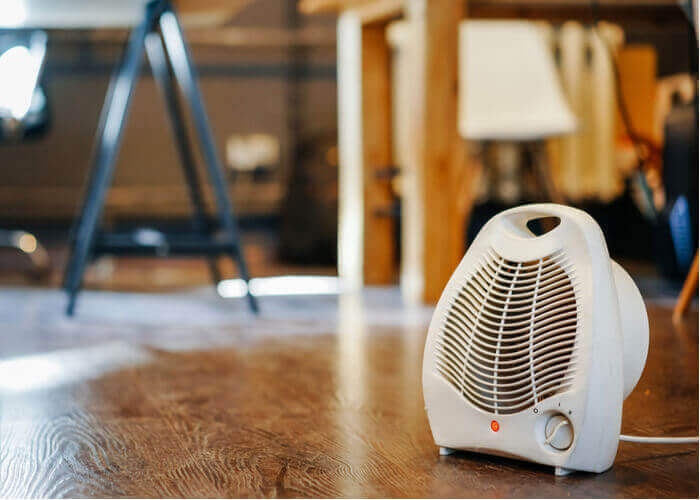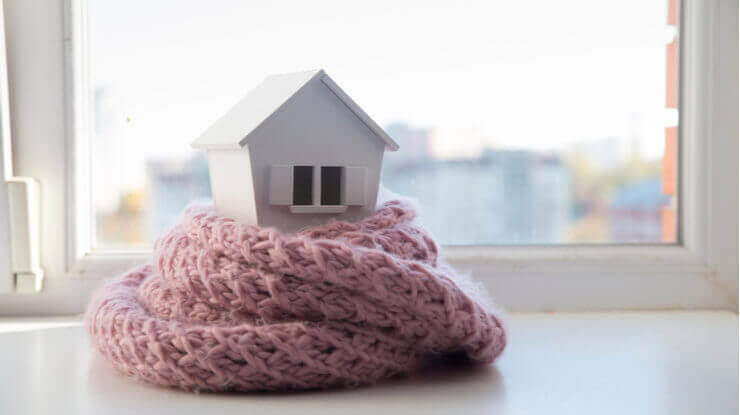With winter heating comes the need for winter heating safety. December, January and February are the leading months for home heating fires, according to the National Fire Protection Association.
Here are the areas of your home where you should focus, to keep your family safe.
Top 6 Winter Heating Safety Risks
Here are the top 6 items to watch out for, to keep your family safe this winter.
Space Heater Fires
Space heaters account for 4 out of 5 heating fire deaths, according to the National Fire Protection Association. They are the number one winter heating safety risk in your home.
If you want to make sure you don’t have a fire in your home due to a space heater:
- Choose the proper size space heater. Assume 10 watts of heating for every square foot. For example, a 10 x 10 room (100 square feet) will need a 1000 watt space heater.
- Keep the space heater 3 feet from your walls or any flammable material.
- Look for safety features, such as an automatic off switch if it tips over.
- Turn it off when you leave the room.
Lower Your Winter Heating Bill
Get the DIY Home Energy Audit download plus our energy savings newsletter.
"*" indicates required fields
Heating Your Home by Oven
Using a gas oven or stove top to heat your home is the second highest winter heating risk in your home. You always read about it as a “don’t”. But here’s why you should never use an oven or stove top to heat your home.
First, it’s extremely inefficient. It may heat the surrounding area, but the heat won’t travel throughout your home.
Second, if your oven is gas and the flame isn’t burning efficiently, you’re risking carbon monoxide poisoning.
And third, for both electric and gas ovens, you’ll have a physical risk of a child or pet accidentally burning themselves.
Carbon Monoxide Poisoning
We all know that you should keep your home tightly sealed to keep in the heat. You can do a DIY home energy audit to find and seal air leaks.
But with your home tightly sealed against drafts, you can run the risk of carbon monoxide build-up.
Make sure to have a carbon monoxide detector in your home, in addition to fire and smoke detectors. You can find out more about carbon monoxide safety in our article on that topic.
Chimney Fires
When you burn wood, your chimney can become filled with creosote, a tar-like substance that’s a natural side-effect of burning wood.
A chimney sweep (yes, like in Mary Poppins) can check the structure of your flue and chimney. Your chimney should be inspected and cleaned annually.
Fireplace Sparks & Ashes
And our If you are using a wood fireplace, make sure you place a screen in front of the fire to keep any sparks from hitting flammable materials in your house. When cleaning out ashes or coals, place them in a metal container with a lid, as least 10 feet from your home.
Have a natural gas fireplace? Make sure you perform basic annual maintenance on your gas fireplace.
Candle Fires
While not a heating source, candles, fireplaces and cold weather all go together. Sipping hot cocoa and watching the snow come down. Some candles to set the ambiance. Nice.
But the National Candle Association (yes! that’s a thing!) gives these steps for candle safety.
- Don’t leave a candle burning unattended. Make sure the candle is completely out and the wick tip is no longer glowing.
- Never burn a candle near something that could catch fire
- Don’t burn candles less than 3 inches apart. This will ensure they don’t melt each other, or create their own draft which would cause them to melt irregularly.
- Avoid drafts or vents, which can cause the flame to burn irregularly.
- Keep away from pets and kids! Melted wax can scald, and a turned over candle can ignite a fire.

Concerned about high natural gas heating bills? We’ve got ideas for that too! Check out our article on how to lower your heating bill this winter.
